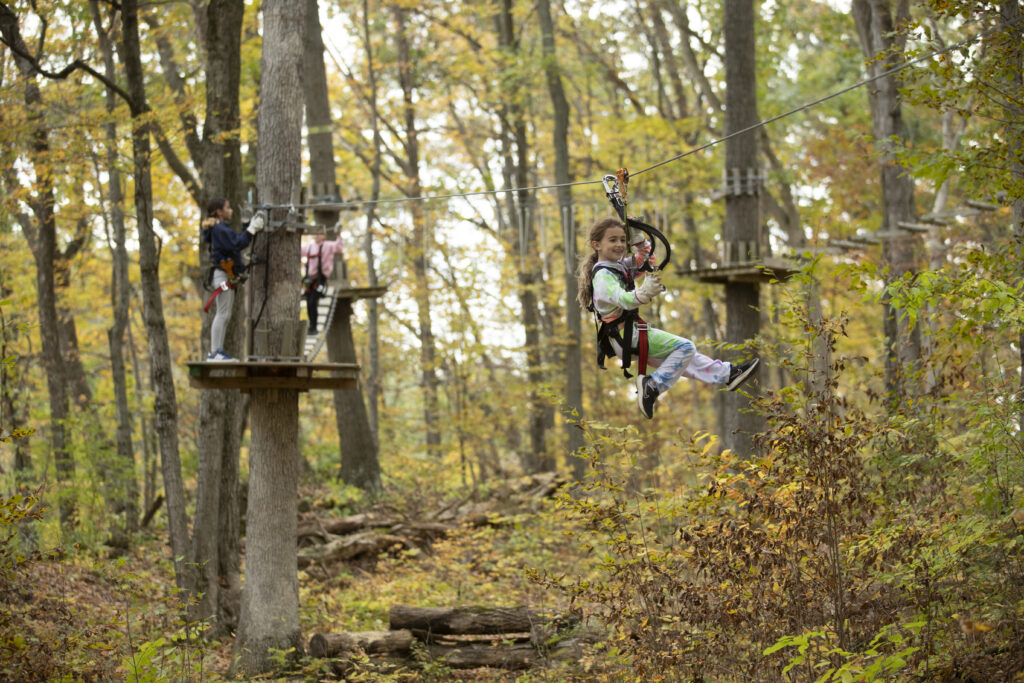You know that moment right before you step off a zip line platform when your heart starts hammering? That sudden mix of fear and excitement isn’t just in your head; it’s your body’s natural response to thrill. In this blog, we’ll break down what an adrenaline rush really is, what it does to your brain and body, and why zip lining is such a powerful (and fun) way to feel it.
What is an adrenaline rush?
Adrenaline (scientists call it epinephrine) is basically your body’s emergency hormone. When something seems dangerous, stressful, or just plain intense, your system dumps adrenaline into your bloodstream to get you ready for action, preparing your body to either confront or flee from a threat.
When you’re standing on that zip line platform looking down, your brain doesn’t care that you’re safely harnessed in. All it sees is height and speed, which equals potential danger in its book. Your adrenal glands immediately start pumping adrenaline into your blood. Your heart pounds, you start breathing faster, and suddenly you notice every little detail around you. That’s the rush hitting you.
What happens in your brain during a zip line ride?
It starts with the amygdala, the part of your brain that processes emotions like fear. It sends a message to the hypothalamus, which then alerts your adrenal glands. In seconds, adrenaline is released into your bloodstream.
As adrenaline spreads, your brain becomes laser-focused. Senses heighten. You might feel hyper-aware of the trees, the wind, even your own heartbeat. On top of that, your brain may also release dopamine and serotonin (neurotransmitters linked to pleasure and mood) adding a layer of euphoria to the experience.

The physical effects of zip lining
Adrenaline isn’t just a brain thing, your entire body reacts:
- Your heart rate and blood pressure rise
- Pupils dilate, improving your vision
- Muscles tense and become more responsive
- Your liver releases sugar to give you an energy boost
It’s your body’s way of saying: Get ready for anything.
Why do people crave that zip line high?
For some people, adrenaline feels like a reward. That’s because it often triggers a release of dopamine, the brain’s “feel-good” chemical. It’s a natural high. Plus, the sense of overcoming fear can leave you feeling confident, clear-headed, and even peaceful.
When done in a controlled, safe environment, like a zip line park, this type of thrill can actually help lower long-term stress and build mental resilience.
Where to experience it: TreEscape Adventure Park
Want to feel that adrenaline kick for real? TreEscape Adventure Park delivers exactly what you’re looking for. Built right into the forest canopy, it’s way more than just a few zip lines – you get a complete treetop experience.
We’ve got multiple zip line courses, rope obstacles, and elevated challenges that work for beginners and people who’ve done this before. The whole setup focuses on giving you that thrill while keeping you safe – which matters when you’re suspended 30 feet off the ground. You’ll get full instruction, top-notch gear, and staff to guide you every step of the way.
Curious about what else you can enjoy at TreEscape Adventure Park beyond the ropes courses?
See Other Experiences →Is an adrenaline rush always good?
In moderation, yes. A short-term adrenaline rush can help sharpen your mind and give you a healthy sense of challenge. But too much adrenaline, especially when caused by chronic stress, can lead to:
- Headaches
- Anxiety
- Insomnia
- Heart palpitations
- High blood pressure
That’s why getting your adrenaline fix through adventure activities beats letting daily stress trigger it constantly. Your body can’t tell the difference between a zip line and a work deadline, but at least one of them is actually fun.

How to calm down after the rush
After a big thrill, your body needs time to come back to baseline. Here are a few ways to help with that:
- Deep breathing techniques (box breathing or 4-7-8 method)
- Take a walk, especially in nature
- Stretch or do light movement
- Listen to calming music or nature sounds
- Chat with a friend to reflect on the experience
These actions help activate your parasympathetic nervous system, the system that calms everything down after a high-alert state.
Takeaway
Zip lining isn’t just about the thrill. It’s a way to feel fully alive, fully alert, and totally present. That adrenaline rush sharpens your senses, energizes your body, and leaves you with a sense of achievement.
So next time you’re looking to break out of the ordinary, step off that platform. Let your brain do what it’s built for, and enjoy the ride.
Ready to try it?
Book your next zip line experience at TreEscape Adventure Park and feel the adrenaline for yourself. Adventure is waiting.
Want to learn about aerial ropes courses at TreEscape?
Read More →